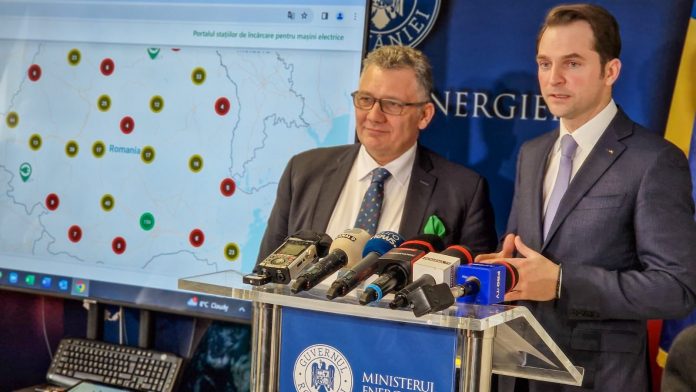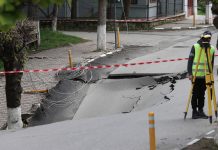
Romania’s energy minister has launched the national map of EV Charging Stations in partnership with the Electric Mobility Association (AME), to cater for the growing number of electric cars on the road.
AME produced the map together with experts from DEKRA Romania, which is intended to meet the needs of electric car users and provide them with a platform for information about charging stations in Romania, their power and type of connection.
The number of electric cars registered in Romania increased by 35% in 2023 compared to the previous year.
The Electric Mobility Association (AME) was represented at the launch by Mr. Christian Macedonschi, the secretary general of the association, Mrs. Mădălina Kerestely, general manager of Intermodal & Logistics Magazine, the vice president Ionuț Muntean, CEO of DEKRA Romania and Mr. Cristian Danciu from Charger.ro, a founding member.
The idea for this map came at the conference organized by the German-Romanian Chamber of Commerce AHK at the end of last year in Berlin where representatives of the German national electric mobility association B.E.M. met with their Romanian counterparts from A.M.E. and the Energy Minister Mr. Sebastian Burduja where they laid the foundations for collaboration.
„At the moment, we are discussing an informative map…. but our vision is more ambitious. We are putting ourselves in the shoes of the Romanian user, the one who drives an electric car and wants to get from point A to point B,” said Mr. Burduja.
” It is unpleasant to run out of energy… and so we want to facilitate first of all a single interface, a single point of entry, so that there are no situations where they download multiple different applications to their mobile phone,” the minister added.
So far, some 520 public charging stations have been included in the map, corresponding to approximately 1,400 charging points. Most stations have more than one charging point.
Stations operated by Renovatio E-Charge, EVConnect, EON Drive, ENEL X, OMV Romania, MOL Plugee, ROMPETROL Romania and Tesla have been introduced, while stations operated by Plugpoint, Eldrive, Polyphazer, EvGoSmartCharge, other station operators, those installed by retail networks and hotels, hostels, restaurants, shopping malls, fitness centers, private car parks or airports, as well as those installed by local authorities have been introduced.
„I am glad that we managed to create in such a short time this interactive map of charging stations in Romania and I would like to thank Minister Burduja and his team as well as colleagues and partners of the Electric Mobility Association for the excellent collaboration,” said Mr Macedonschi.
„The current map is a basis for further developments, it shows us where the existing stations are but also where we will need to develop the station network further. The EU directive requires the development of high power stations within 60 km on motorways and major national roads and with this map we can see exactly where we still need to install such stations,”he said.
„Also, if we superimpose it over the energy map of Romania we can see where we have or will need the necessary installed power to place new charging stations,” the AME president added.
There are currently 42,000 electric cars in Romania, of which about 16,000 EVs were registered last year, an increase of more than one-third compared to 2022. The trend for buying EVs is expected to continue.
Later this year, the aim is to develop a mobile phone app that interacts with the charging stations’ apps so users can see if the stations are in working order, what price they offer per KW, start charging and pay through the operators.
The map can be accessed at www.ro-evmap.ro and to request new stations on the portal send an email to [email protected]
In the coming years the number of Plug in Hybrid Electric Vehicles (PHEV) and Battery Electric Vehicles (BEV) will increase and the number of stations will have to increase accordingly.
At European level, the aim is to have an electric car fleet of 75 million cars by 2035, when the sale of cars with petrol and diesel engines will be banned.
„It is also very important that during the development of this project we supplement with an IoT – Internet of Things – sensor-based system, whereby I, as a user, can see in real time if the station I propose to go to is free, because beyond it I might not have the energy to go further,” Burduja pointed out.
In order to cover the charging needs, 1,000 charging stations are needed for every 5,000 electric cars and the electric cars used by foreign tourists visiting our country must also be taken into account.
„This future national application must be functional and friendly for foreigners as well, so that tourists don’t have to download a whole load of other applications” Mr. Macedonschi concluded.
















